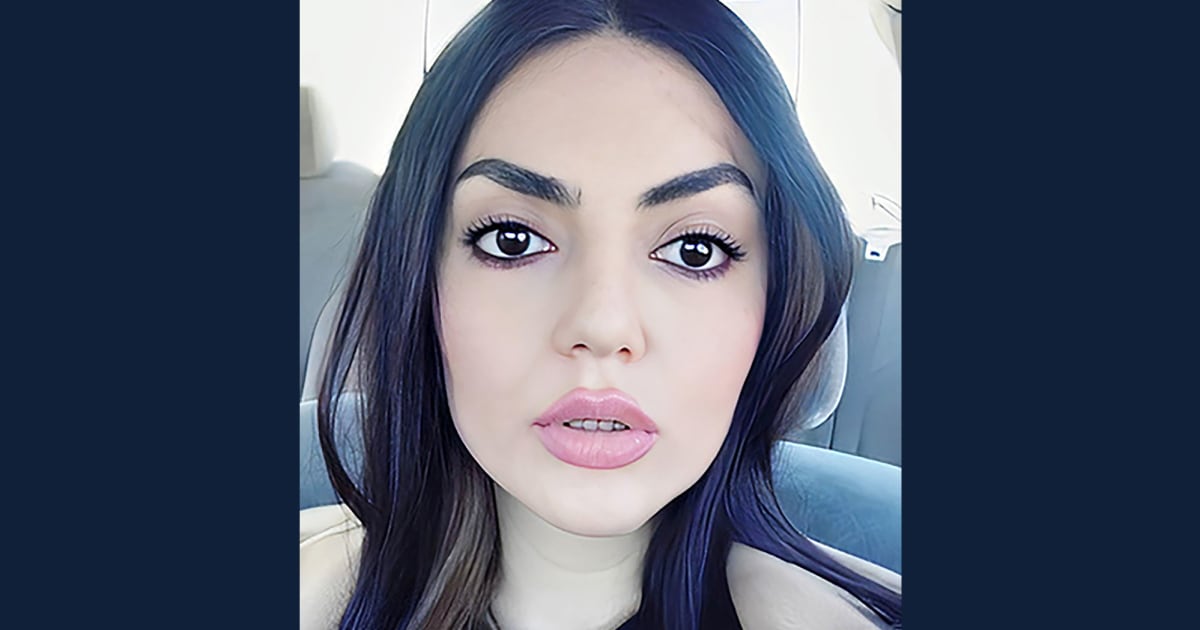A woman was accosted in Tehran. The Iranian police arrested her.
Where is Roshanak Molaei? The hashtag is circulating in Iran after the 25-year-old woman disappeared in Tehran after being taken into custody by police, raising concerns about her treatment as the country continues to crack down on women who defy mandatory hijab laws.
The events that led to Roshanak Molaei’s arrest did not start as a protest.
A surveillance video shows the woman walking along a Tehran sidewalk on Nov. 1, before a man dressed in a military uniform approaches her from behind on a motorcycle.
It is not clear from the angle of the footage whether the man verbally or physically accosted her, but according to the nearly 2-minute video that Molaei later posted to her X account, she reacted by grabbing the motorcyclist in a heated exchange that drew several bystanders. The man then drove off.
Molaei captioned the video: “A scene from being a woman in Iran.”

Her account was swiftly taken down.
Hengaw, a Norway-based human rights organization that monitors violations in Kurdistan and Iran, also reposted a version of the video on X.
According to a statement by the organization, Molaei had previously argued on social media with a government official over mandatory hijab laws. The incident captured by the surveillance camera shows Molaei without a hijab.
Iranian police confirmed in a statement that there was a “confrontation between a young woman and a motorcyclist” on Nov. 1, adding that “initial investigations indicate that the motorcyclist harassed the young woman.”
“Both parties have been referred to judicial authorities,” the police statement said. “The motorcyclist will face investigation for both harassment and traffic violations. The woman is being prosecuted for not observing mandatory hijab laws.”
According to Hengaw, on Nov. 2 Molaei was “summoned by FATA,” the Iranian cyberpolice, about her post, and was arrested the following day.
“It remains unclear in which prison she is currently being held,” a representative from Hengaw told NBC News.
“Since her detention, there has been limited information regarding her health and conditions of imprisonment. The lack of transparent information about the situation of political prisoners in Iran remains a widespread concern,” the Hengaw representative said.
This is not the first time Molaei is arrested for opposing Iran’s mandatory hijab laws, according to Hengaw. In 2022, she was arrested during the “Woman, Life, Freedom” protests, a series of peaceful demonstrations triggered by the death of Mahsa Amini in police custody.
Amini had been arrested in part for not wearing a hijab correctly, with the U.N. asserting that she was killed “as a result of beatings” by Iranian authorities. Iran has denied the charges, saying she died of pre-existing medical conditions.

Following her arrest in September 2022, Molaei was sentenced to over six years in prison but released in February 2023 after being granted amnesty, according to Hengaw.
Molaei’s new arrest is yet another incident fueling alarm from international human rights organizations. In a 2024 report on the situation of human rights in Iran the U.N. “raised pressing concerns” about the “deteriorating human rights situation for women and girls” across the country.
“Roshanak’s case exemplifies the systematic oppression faced by women when they seek to claim their basic rights and personal freedoms,” Hengaw said in a statement.
“Women in Iran who publicly oppose mandatory hijab and other discriminatory laws face immense risks, including imprisonment, intimidation, and mistreatment.”
A day before Molaei’s arrest, a young woman was detained after stripping to her underwear in an apparent protest at the Olum Tahghighat branch of the Islamic Azad University in Tehran, state media reported. The woman was transferred to a psychiatric hospital, raising concerns for her safety. There is no specific information on the woman’s condition, but Amnesty International has found evidence that people detained in psychiatric wards have been subject to torture, beatings and other mistreatment.
The security agents who enforce hijab laws, informally called morality police, have recently started easing public confrontations with women over the headscarves, following the election of reformist president Masoud Pezeshkian who campaigned on opposing these police patrols.
However, locals say the agents continue to be present in the streets, but have been instructed to issue warnings rather than take immediate enforcement actions. Bystanders are discouraged or prevented from filming, restricting the how many of these interactions appear on social media.
In addition, the government has set up new centers called “anti-unveiling clinics,” where women who choose not to wear the hijab may be referred to for a program described as “therapy,” to encourage compliance of hijab laws.

